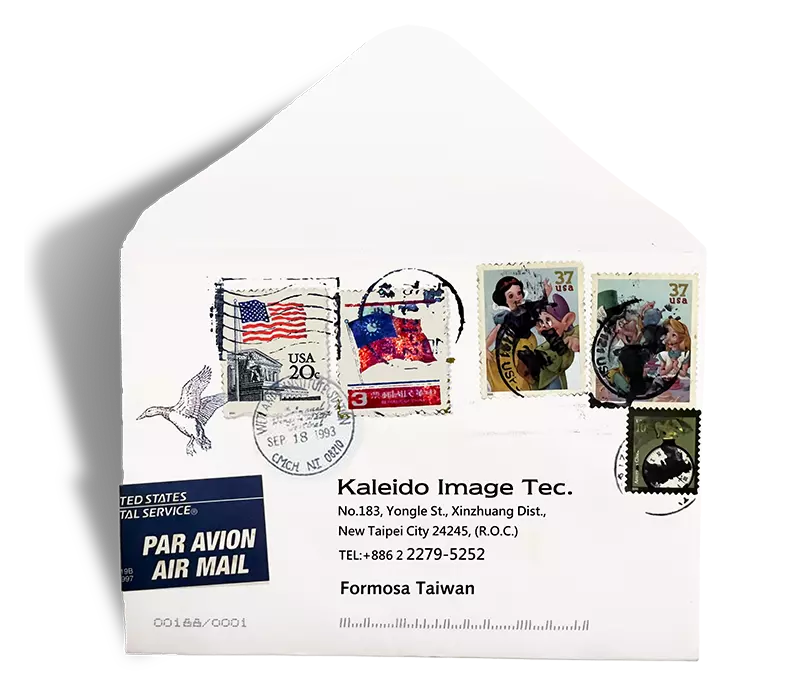- MENU Design Customized MENU Book
- Genuine Leather MENU #01:
- Synthetic Leather MENU Outline #02:
- PU Leather MENU #03:
- Functional Cloth MENU Outline #04:
- Herbal Weaving Menu #05:
- Hinoki MENU #06:
- VC Plywood MENU #07:
- Bamboo MENU #08:
- Paper-mache MENU Outline #09:
- Banner #10:
- Organic Soil Material #11:
- American MENU #12:
- Invincible MENU #13:
- MENU Page
- MENU Binding
- MENU Processing
- Quot Trading
- MENU Summary
Traditional Skills
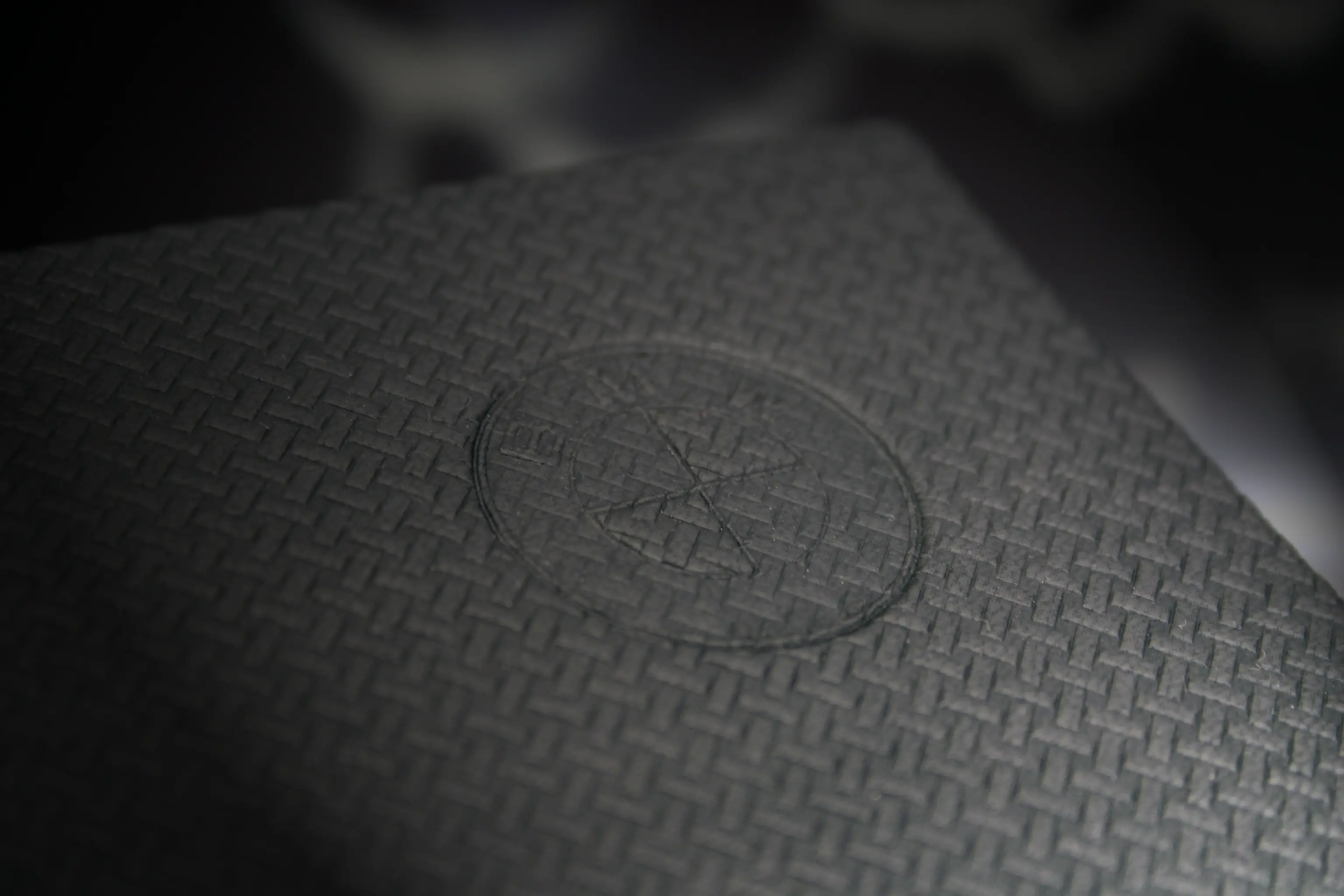
Thank you for the designated use of automobile manufacturers
Following traditional ancient techniques, we have improved the process by using controlled temperature heating without an open flame. This method eliminates the generation of large amounts of carbon dioxide emissions and avoids the production of PM2.5. We take a responsible and sustainable approach towards ecological environment and air quality. The traditional processing is divided into two methods: branding and hot stamping. Each method constitutes one processing cycle, so when both methods are combined, it requires two processing cycles.
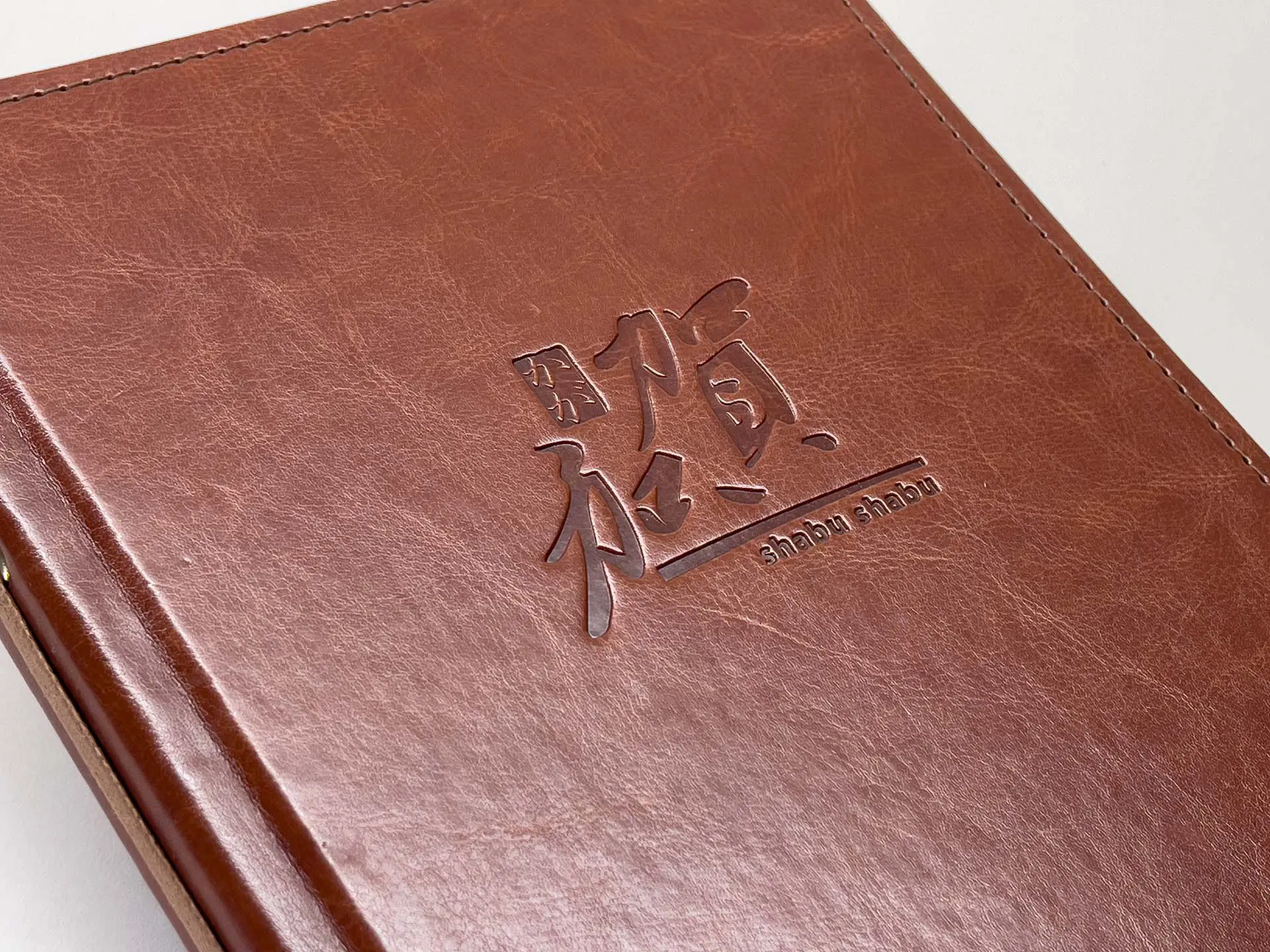
Branding
Branding, a traditional craftsmanship, involves heat processing on leather. It imparts a subtle color transition to synthetic leather while natural leather, latex leather, and raw wood materials exhibit a more pronounced natural color variation when branded. The illustration provided depicts latex leather.
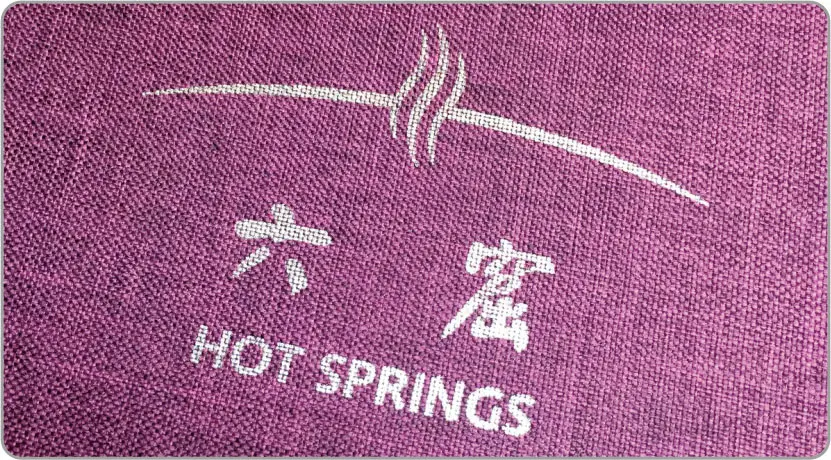
Hot Stamping
Hot stamping, a traditional craftsmanship, can be applied to various materials through heat processing. While it is possible to achieve a hot stamping effect on different materials, not all materials yield satisfactory color fastness. Most hot stamping results may experience normal wear and tear due to friction, leading to some fading or peeling. Only specific materials developed for hot stamping exhibit good color fastness, such as paper, latex leather, and plastic foam. However, except for latex leather, other materials may not be suitable for use in the food and beverage industry, where they come into contact with liquids. In the provided example, the initial batch of hot stamping was applied in a sulfur hot spring area. It was explicitly communicated that friction could cause the stamped design to fade. Computer embroidery was recommended as a better alternative, but the buyer insisted on hot stamping. Consequently, the hot stamping quickly disappeared. The subsequent batch followed the recommendation of computer embroidery, and the menu books lasted for years without any issues. It is important to note that this does not imply that hot stamping is inherently flawed or problematic. The success of hot stamping depends on the compatibility between the technique and the specific material. The provided illustration depicts functional fabric.
There are four processes for latex leather material in this illustration
Window opening + leather texture branding + LOGO branding + hot stamping
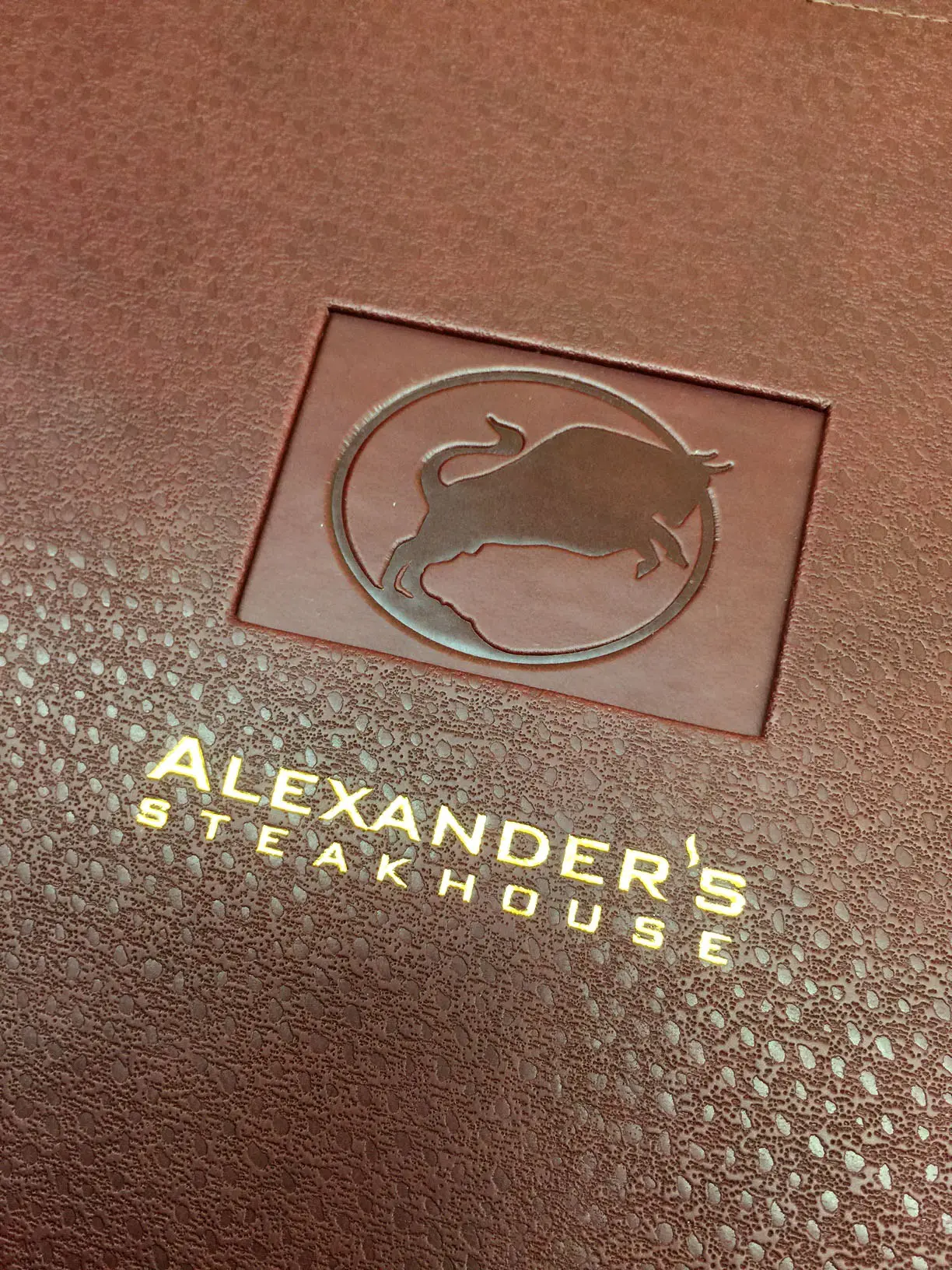
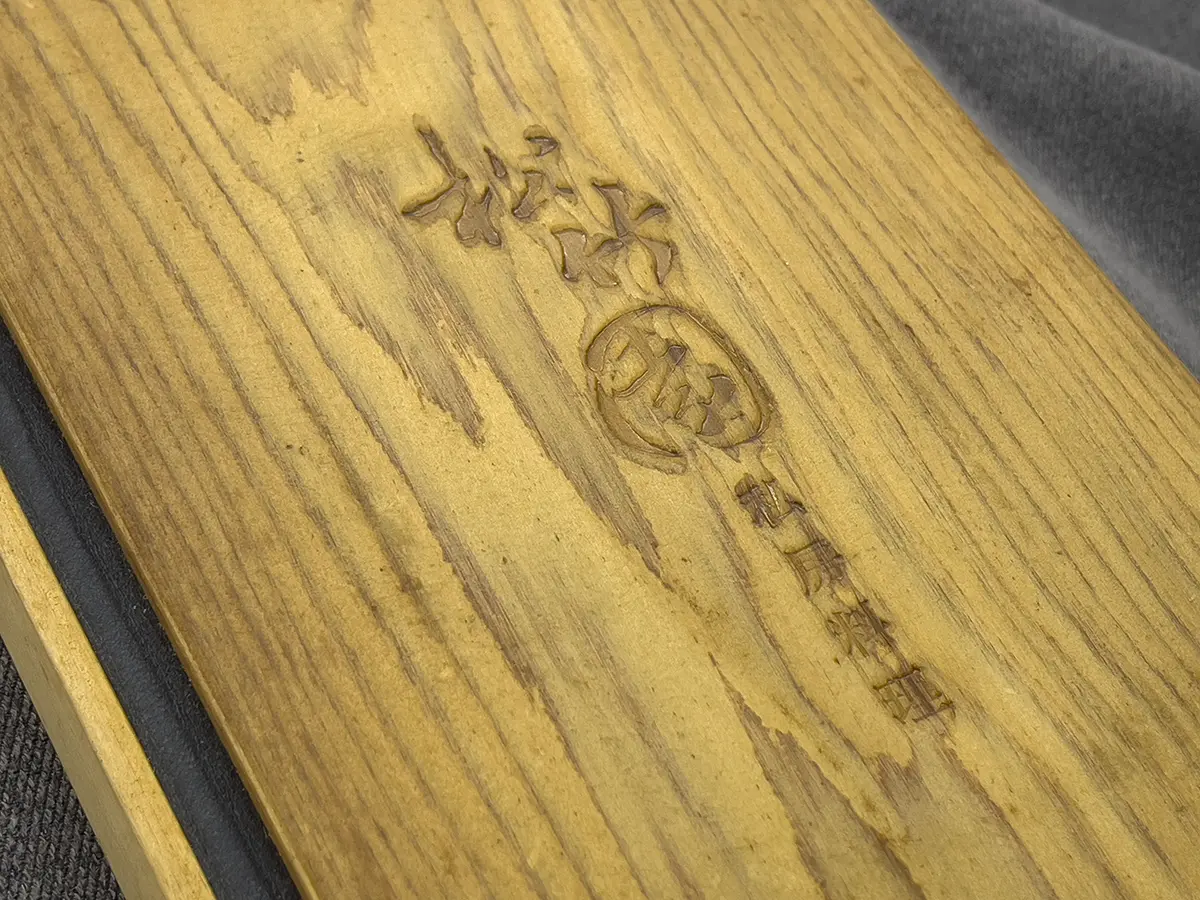
Log Branding Color Gradient
Branding, a traditional craftsmanship, involves heat processing on raw wood. When branding artificial wood, it results in a subtle color transition without natural variations. Only the branding of actual raw wood materials imparts a natural color variation. The provided illustration showcases raw wood.
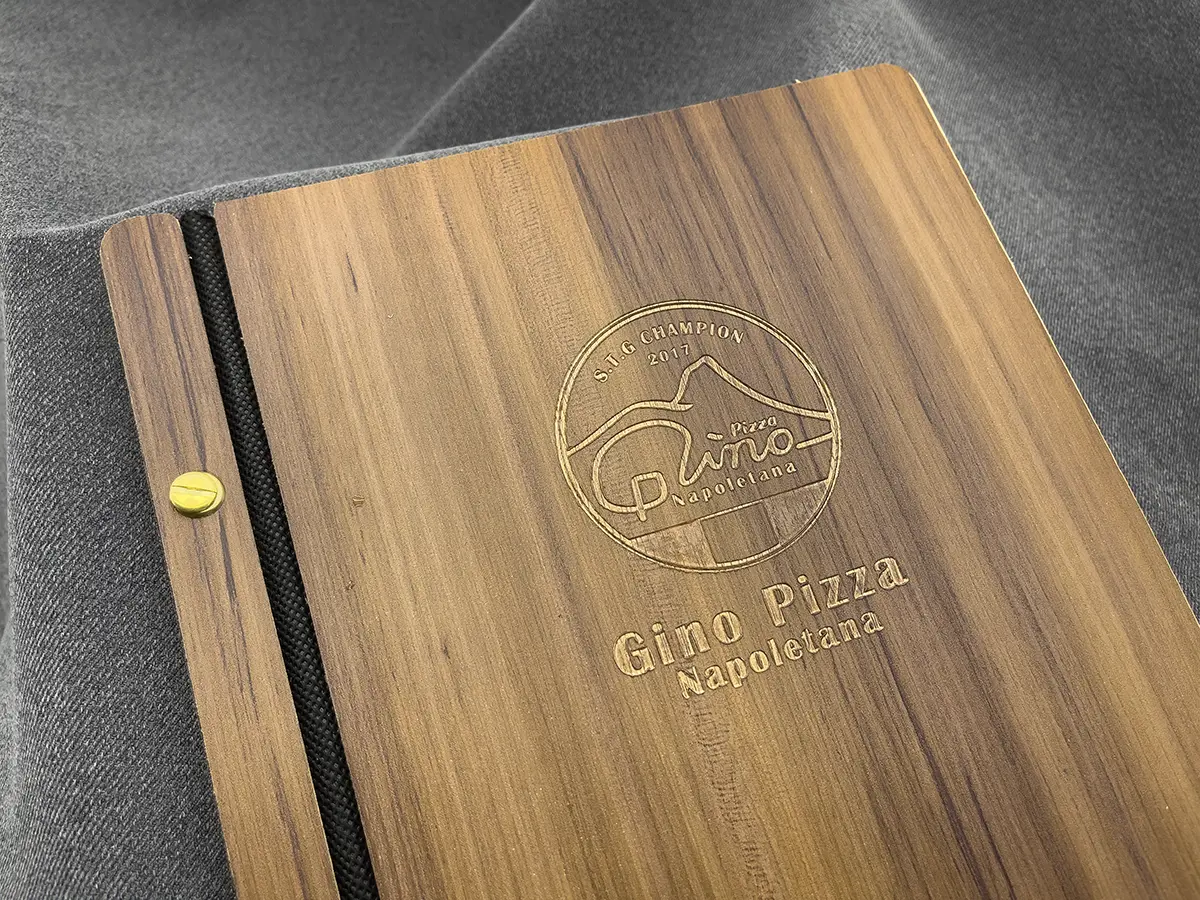
Faux Wood Melia Board Branding
Branding, a traditional craftsmanship, can be applied to artificial wood through heat processing. When branding artificial wood, it results in a uniform color without natural variations. Only the branding of actual raw wood materials imparts a natural color variation. The provided illustration showcases the beauty of artificial wood veneer.
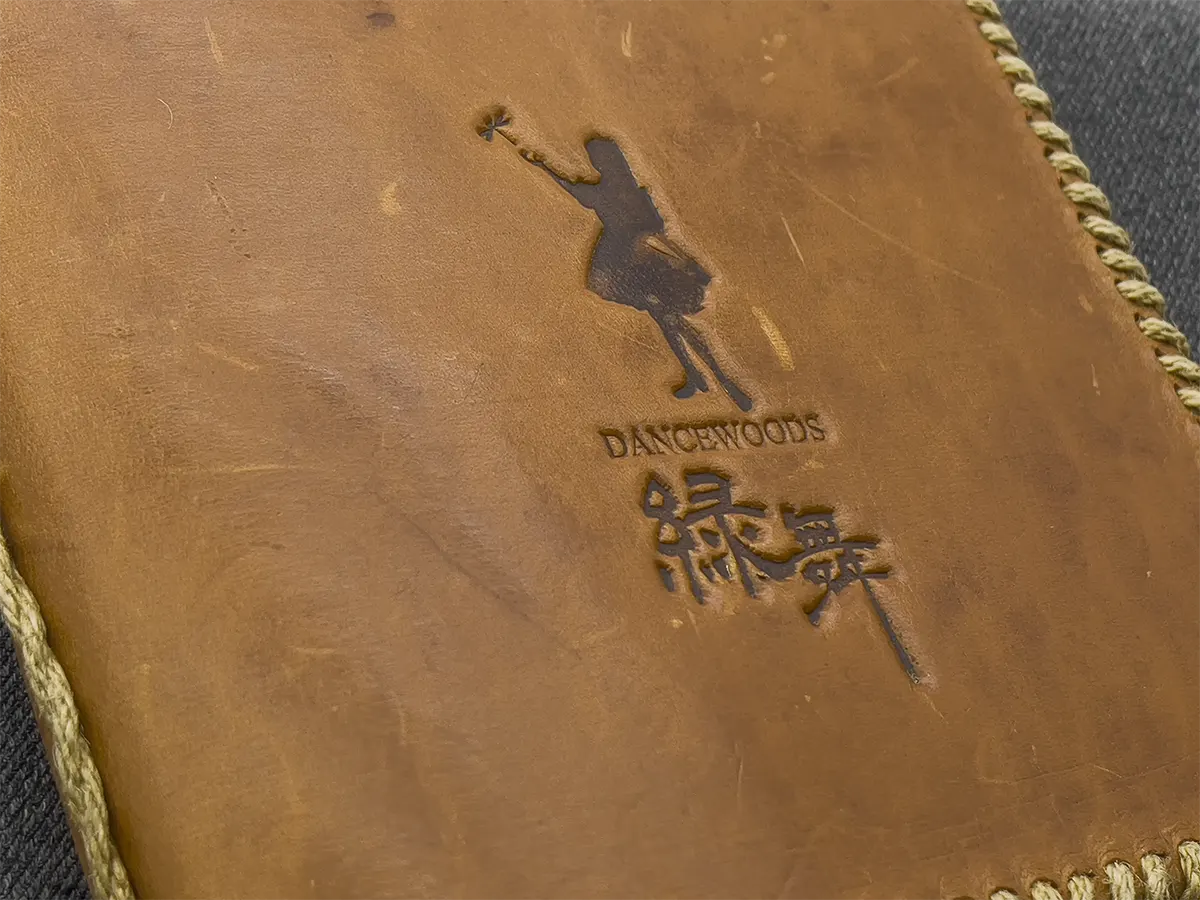
Genuine Leather Imprint Color Gradient
Branding, a traditional craftsmanship, involves heat processing on genuine leather. When branding synthetic leather, it results in a uniform color without natural variations. Only the branding of genuine leather materials imparts a natural color variation. The provided illustration showcases American cowhide, a type of genuine leather.
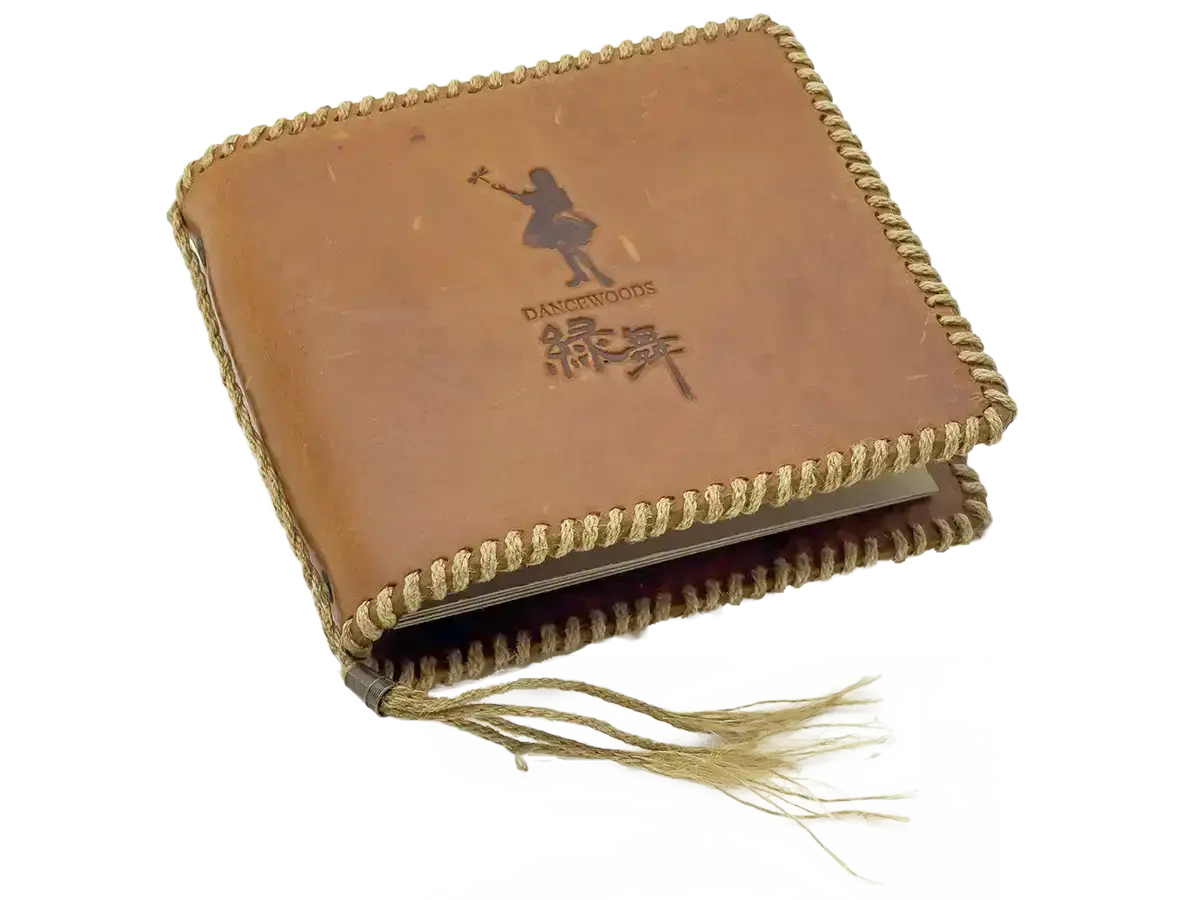

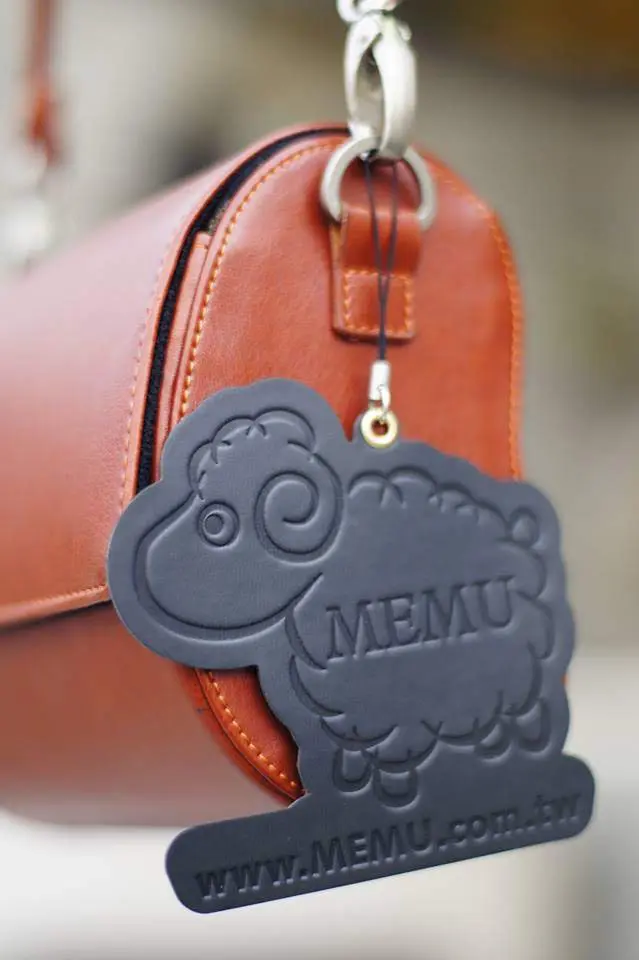
Latex Leather Imprint Color Gradient
Branding, a traditional craftsmanship, involves heat processing on leather. When branding synthetic leather, it results in a uniform color without natural variations. Only genuine leather, latex leather, and raw wood materials exhibit a natural color variation when branded. The provided illustration depicts latex leather.
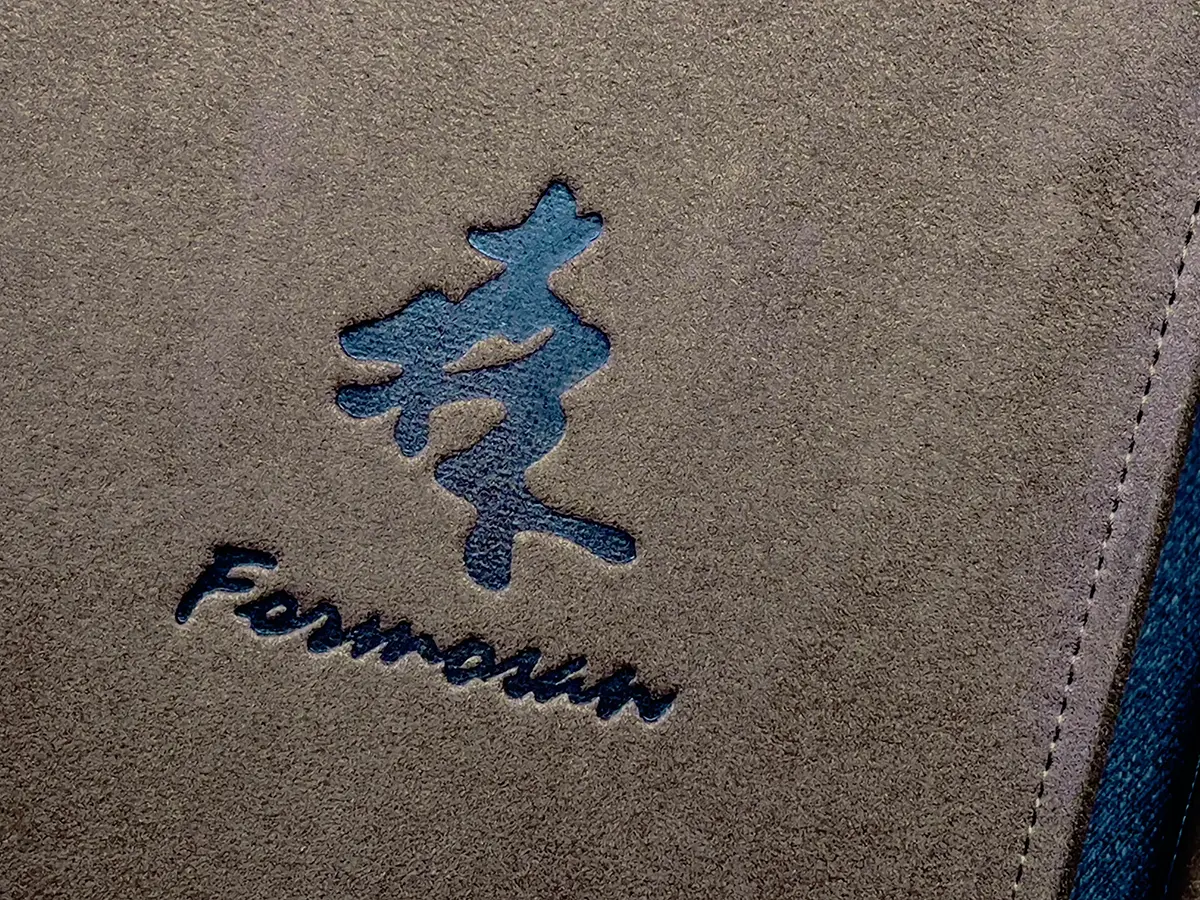
Faux Suede Imprinted Gradient
Branding, a traditional craftsmanship, can be applied to synthetic suede fabric through heat processing. This particular type of synthetic suede fabric exhibits a color transition when branded, but not all synthetic suede fabrics will have this characteristic. Only this specific type of synthetic suede fabric shows a natural color variation when branded, even the manufacturer of the material may not be aware of it. The provided illustration depicts synthetic suede fabric.
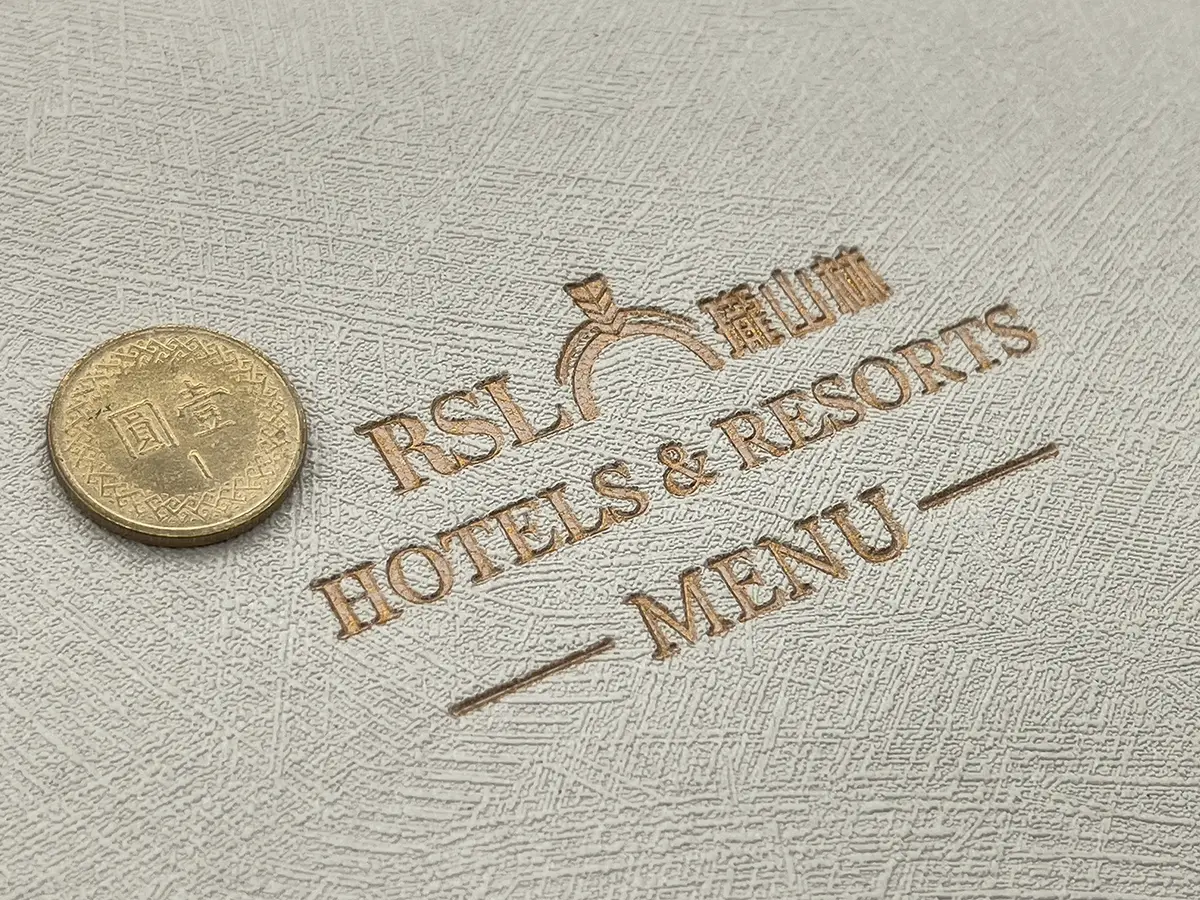
Wallpaper Hot Stamping
Wallpapers are SGS certified, unlike regular paper, and they also have water-repellent properties that regular paper lacks. The traditional craftsmanship of hot stamping can be applied to wallpapers through heat processing. Wallpapers are particularly suitable for hot stamping due to their excellent color fastness and resistance to peeling. This is attributed to the PU coating on the surface of the wallpapers. It's important to note that alcohol should not be sprayed on hot stamped wallpapers as it may cause fading. Hot stamping on wallpapers can retain intricate details and create a sense of depth. For further technical details, consulting with an experienced professional would be beneficial. The provided illustration depicts a wallpaper.
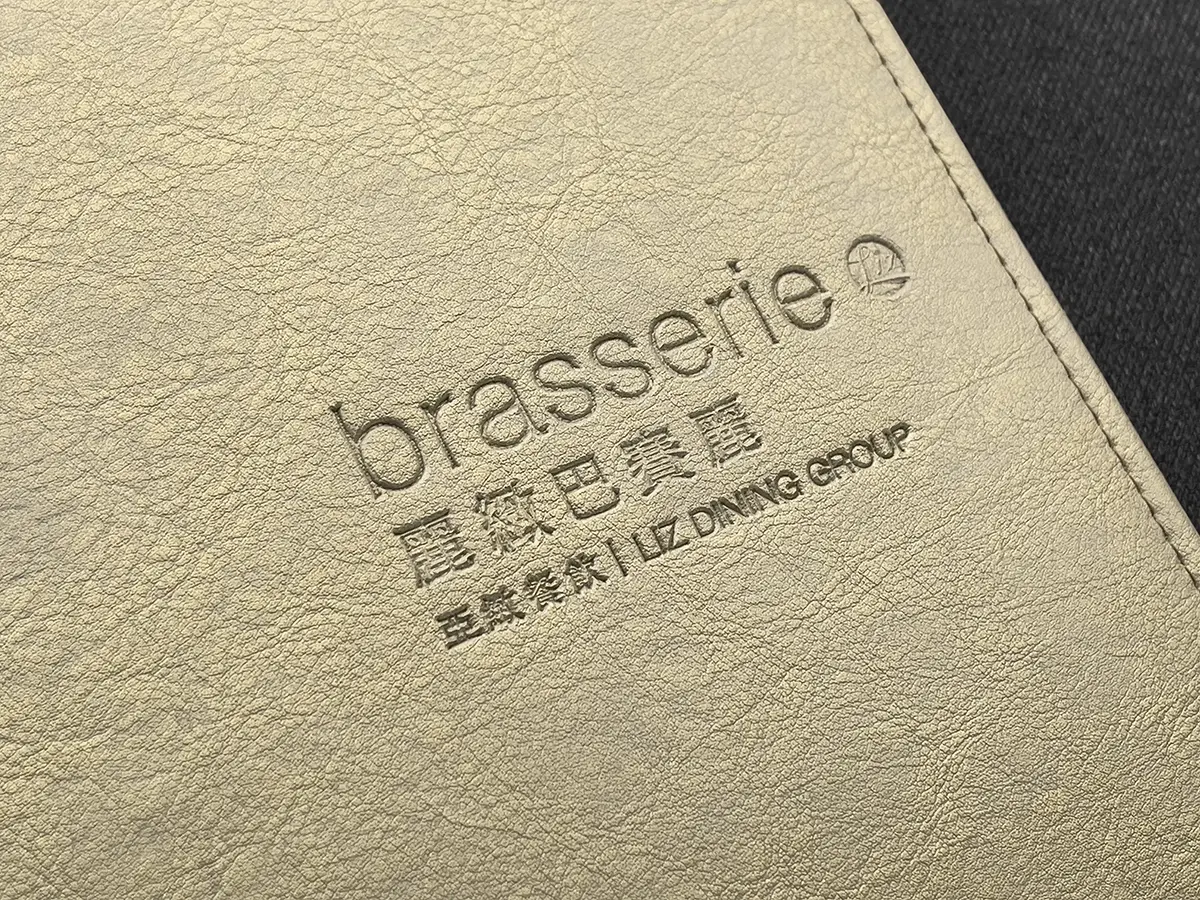
Synthetic Leather Imprint
Branding, a traditional craftsmanship, can be applied to synthetic leather through heat processing. When hot stamping synthetic leather, it will create either a debossed or embossed effect without color variation. The specific hot stamping approach may vary depending on the design of the logo. Prototyping serves the purpose of testing the performance and effectiveness of hot stamping the logo on synthetic leather, helping to make the best selection. The provided illustration depicts synthetic leather.
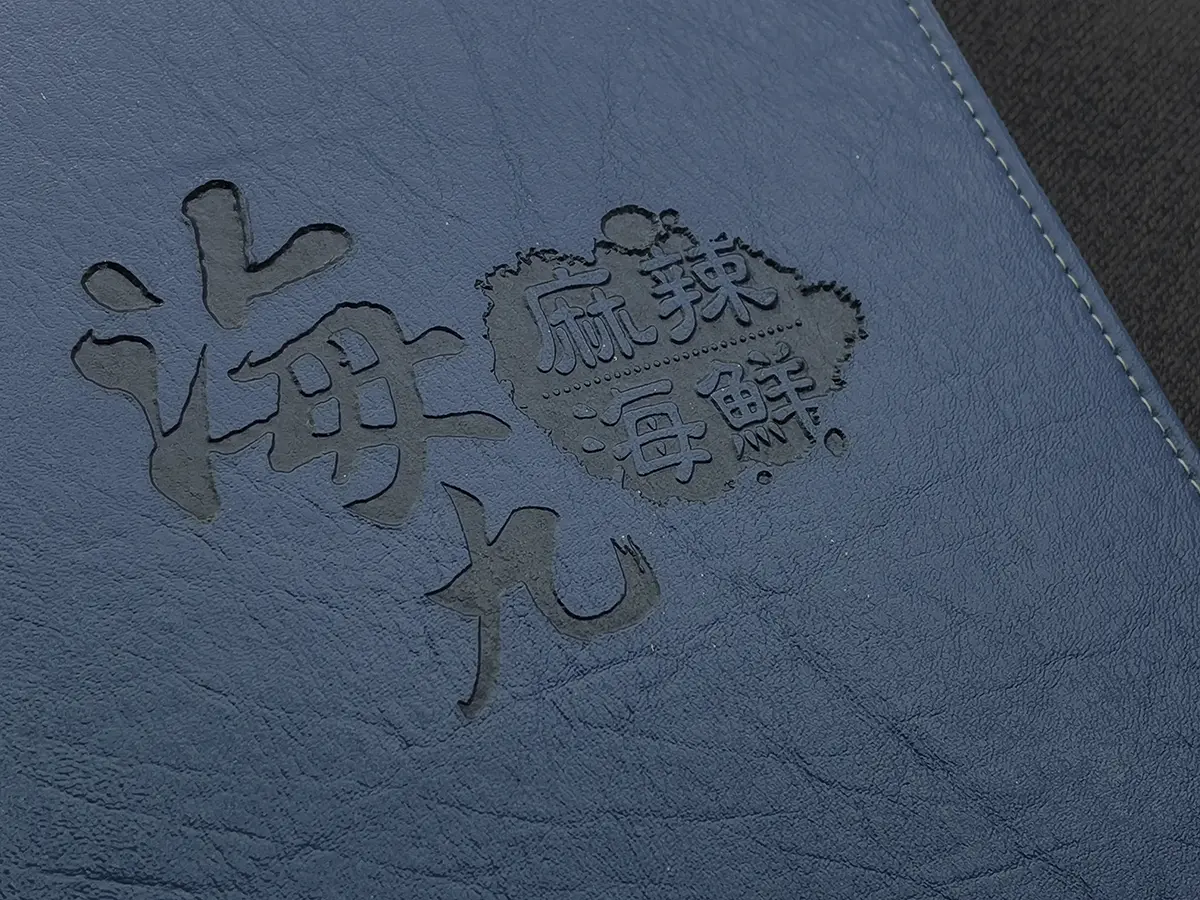
Synthetic Leather Rubbing
When dealing with a large logo design for hot stamping, it is possible to enhance the embossed effect, as shown in the illustration, through the use of embossing. However, it is important to note that hot embossing may not be suitable for rendering small text as it can result in blurred visual appearance, with the embossing extending to the edges. In situations where both a large logo and small text design are present, it would be advisable to consult with an aesthetic expert or your instructor for guidance on the best approach. The provided illustration depicts synthetic leather.
客房菜單
Our custom menus are one-of-a-kind and can be tailored to the buyer’s preferences. For room service menus, we intentionally make them thick and sturdy to prevent them from being taken away, but we can also make them small and thin based on the buyer’s needs. The materials used for the inside and outside of the menu can be mixed and matched to provide a wide range of options. We recommend using a four-hole metal clip for quick and easy replacement of the pages during events.
We support a variety of fine art papers for the inner pages.

The inner pages of this design utilize our proprietary technology, which includes cardboard pages, and is one of our recommended options. The entire series features pages that can be easily added, removed, or replaced, and we support the purchase of various types of fine art paper, waterproof paper, cardboard pages, and magazine paper for the inner pages. If you prefer not to use PVC materials, the aforementioned materials can be purchased separately for use as inner pages. However, only our shop’s products feature inner pages that are easy to flip, durable, without rebounding, and without cracking or splitting along the spine. For estimated production time and costs, please feel free to inquire.
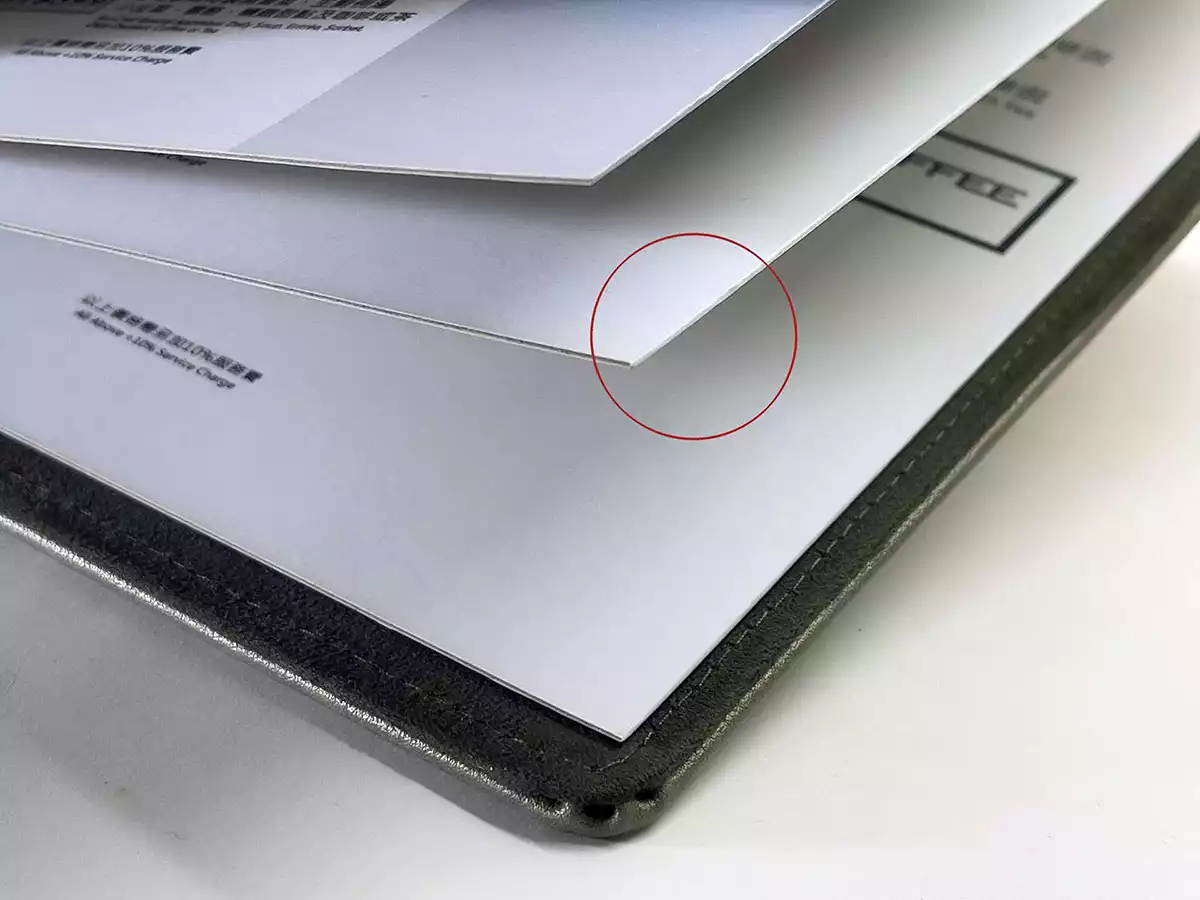
Cardboard inner pages
This image shows a close-up comparison of the 1mm thick side-sealed edge of a cardboard inner page. The area circled in red is where the inner page is easily touched, so it has been folded and sealed to prevent the pages from splitting, effectively extending the lifespan of the inner pages. Side-sealed cardboard inner pages are one of the original and recommended options for inner pages offered by our store.
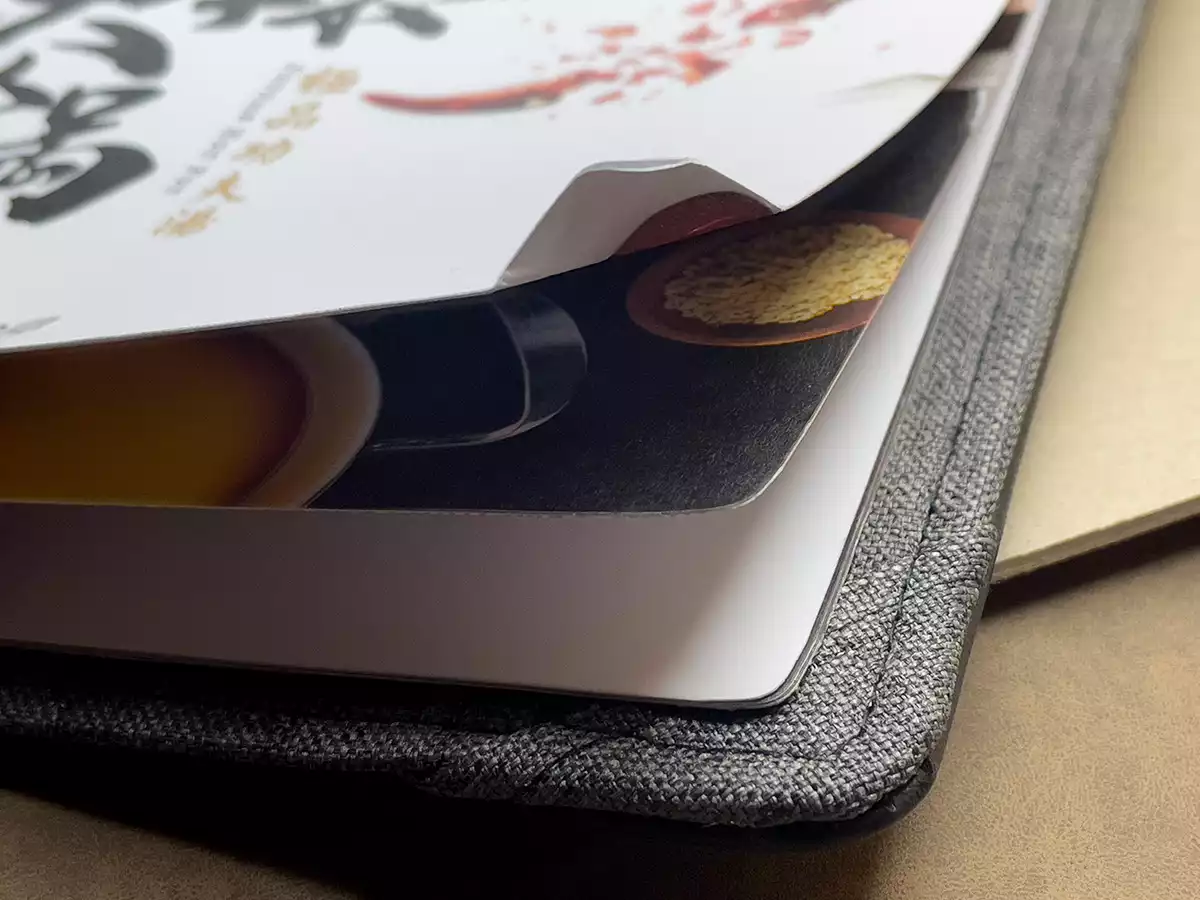
General Sika paper inner page
This image shows a close-up comparison of the side edge of a commonly used 220-pound thickness cultural paper. The red circle indicates the area where the edge is most likely to be touched and also the easiest to fork. Therefore, our shop has applied a technique to round the edges slightly to reduce the frequency of forking, but it will eventually still fork.

The information is for verification, please pay attention to the Taiwan service time difference
:
:
Weekday service hours:
Morning AM09:00~12:00 Afternoon PM01:30~06:00
Please make an appointment for a visit

No.183, Yongle St., Xinzhuang Dist., New Taipei City 24245, (ROC)
Formosa Taiwan
TEL:+886 2 2279-5252

MEMU™ Facebook page
It may take 36 hours to reply due to Taiwan time difference, Facebook fan page does not have online transaction function, Do not provide quotation or anything about money, Only for technical assistance or answer questions after transaction.

LINE Official Account
You can contact us through LINE app, it may take 36 hours to reply due to Taiwan time difference, LINE has MEMU store, welcome to visit and buy, directly click or scan QR Code with LINE app on your phone to enter the conversation.

LINE Shopping Mall
MEMU™ is the only external LINE shopping mall.
Through LINE Pay / E.SUN Bank payment gateway.
Enjoy online credit card payments and online credit card installment services.

HAPPY BUY™
In-house online quoting service - Happy Buy™.
Online quoting only, no online transaction capabilities.
Both buyers and sellers need to transact through a bank.
